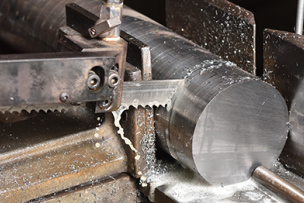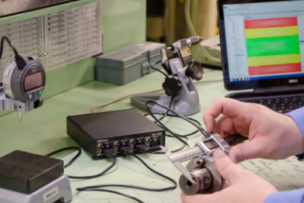Written by Cliff Bliss, 3D Optical Sensor Commercial Operations Manager at Hexagon Manufacturing Intelligence
Step into the optical metrology world and one thing is clear. This vibrant business sector continues to innovate new designs of portable coordinate measuring machines (PCMMs) for the inspection of large components and fixtures. Large-scale manufacturers are still on the hunt for updated optical methods to address in situ 3D measurement over large surface areas found in aerospace, shipbuilding, automotive and other industries. The need to carefully analyze surfaces in detail is driving the trend for better optical measurement tools that provide bigger data sets, as opposed to the old-style check fixtures with hard gaging.
New camera-based optical photogrammetry systems are introducing new designs that are major departures from older versions of the traditional optical toolsets. As these systems are used in harsh industrial environments or in remote outdoor settings, engineers place a special design focus on the robustness and resistance of these systems to the impact of mechanical stress such as vibrations or shock. During the research and development phase, protracted testing is used to check system accuracy over an entire measuring volume. Newer systems embed two high-performance cameras inside a robust housing, allowing for inspection, tracking and positioning even in rough production environments with dust and vibrations.
New Designs, Fast Returns
Modern optical systems based on photogrammetry come in many different configurations. A newer design will contain two high-resolution, 8-megapixel digital cameras in a closed camera beam. These integrated digital cameras are capable of rapidly capturing any type of target placed on the component to be measured or on a handheld probing device. The generated images are processed automatically and 3D coordinate data is calculated in real time. Issues like vibration, noise and position changes that have plagued metrologists for years are no longer problematic. There are optical systems on the market that offer a new technology called dynamic referencing, which enables the system to automatically detect and compensate for these environmental disturbances by optical tracking. This functionality guarantees constant process stability, even if the system is moved during a measurement session.
More Advances
The technology needle has also moved forward in terms of accuracy. There are optical measurement systems in the market now that can measure objects up to five meters in volume with an accuracy range of 40 to 80 microns. A new capability for camera-based solutions is the ability to simultaneously capture multiple points, and expand their usage into load testing and fatigue testing in laboratory settings, as well as other static and dynamic applications. Combine these advancements with dynamic referencing, and the user now has a toolset that can detect geometric conditions with precision, and be used in a high-activity industrial setting with minimal or no downtime.




Talk to Us!
Leave a reply
Your email address will not be published. Required fields are marked *